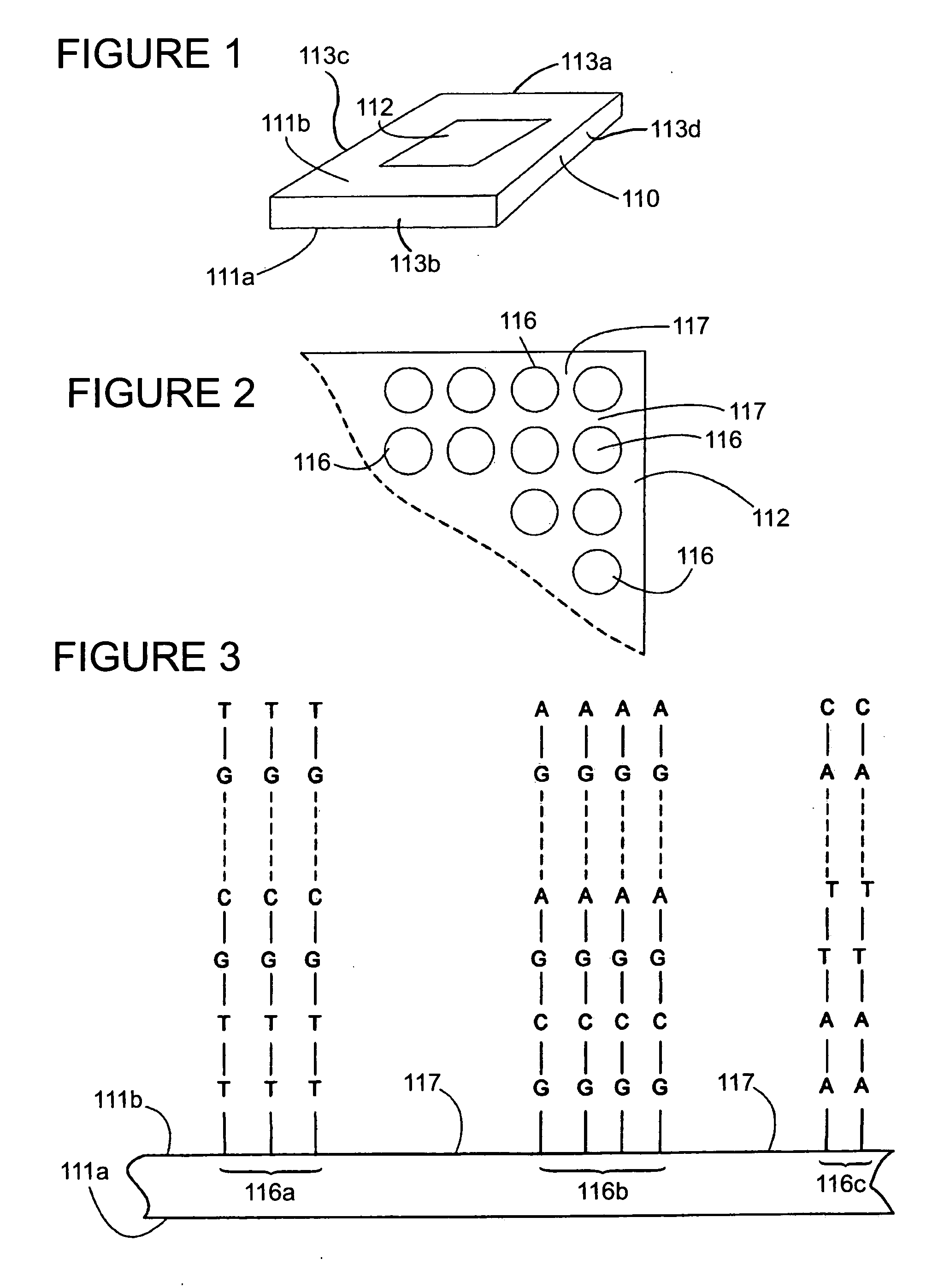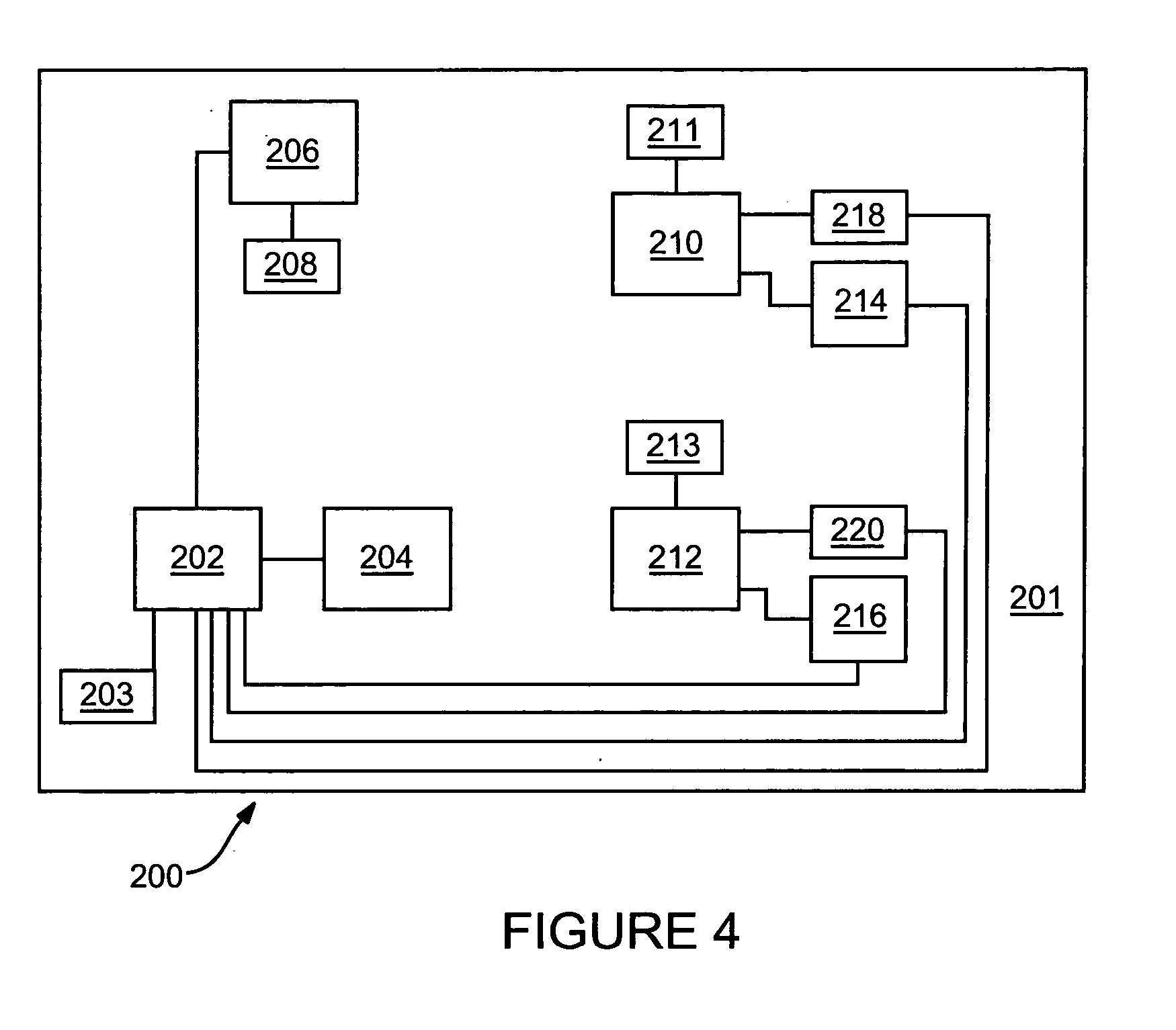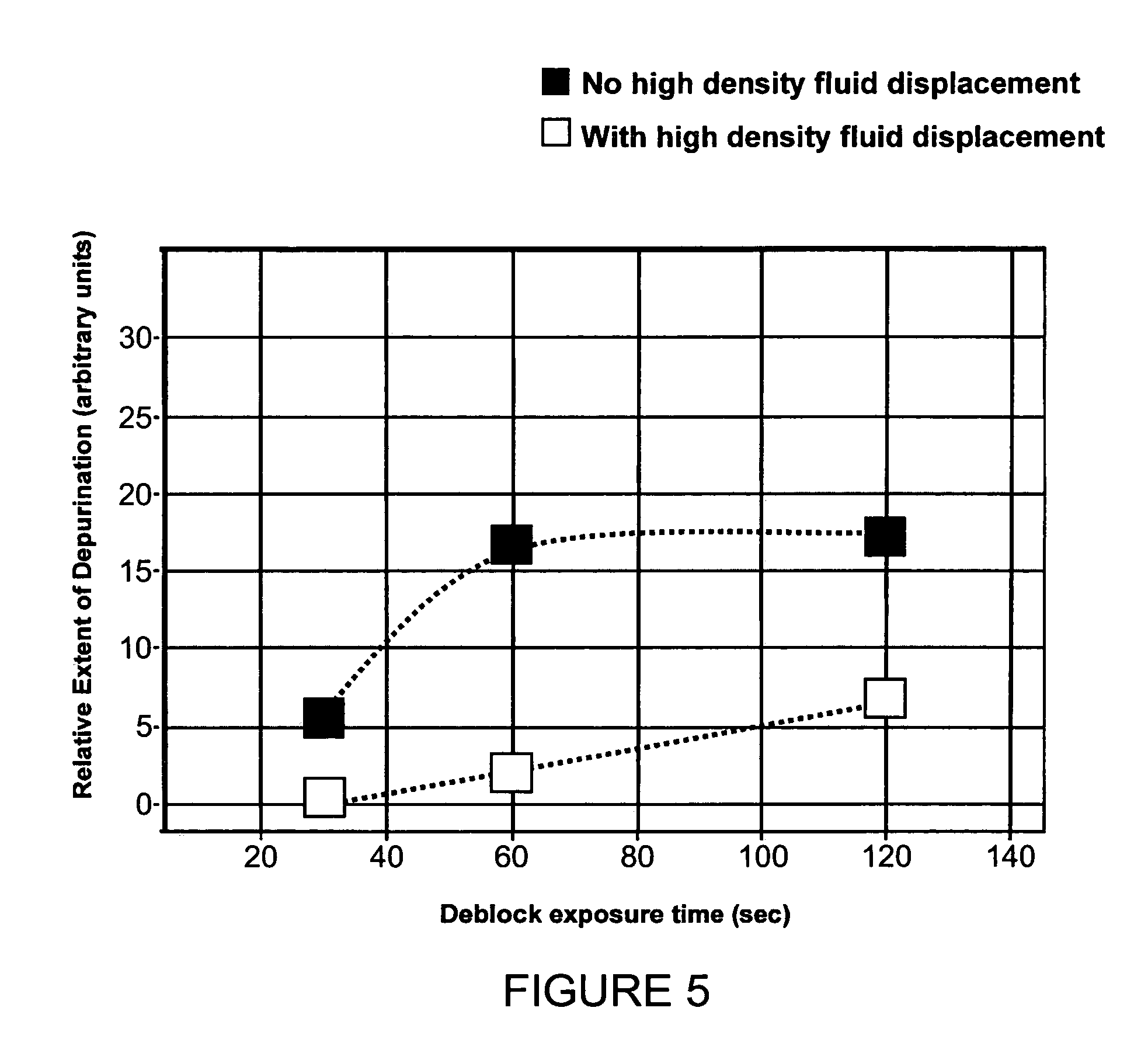Methods for in situ generation of nucleic acid molecules
a nucleic acid and in situ technology, applied in bio chemical/physical/physical-chemical processes, chemistry apparatus and processes, etc., can solve the problems of reducing the yield of final nucleic acids, inaccurate signal intensities, and reducing the use of dmt as a hydroxyl-protecting group in nucleic acid synthesis, so as to limit the efficiency of deblocking
- Summary
- Abstract
- Description
- Claims
- Application Information
AI Technical Summary
Benefits of technology
Problems solved by technology
Method used
Image
Examples
Embodiment Construction
[0093] Methods of producing nucleic acid molecules, e.g., oligonucleotides s using an in situ nucleic acid synthesis protocol are provided. In certain aspects, the in situ nucleic acid synthesis protocol includes a plurality of cycles, each of which includes: (I) a monomer attachment step; and (II) a functional group generation step, the latter of which includes: (a) oxidation and (b) deblocking substeps, and optionally a capping substep. A feature of the subject methods is that, following deblock of the surface, the deblocking fluid is displaced or purged from the surface using a fluid of different density, e.g., an oxidization fluid or wash fluid. Also provided are the solid supports comprising oligonucleotides (e.g., such as arrays) produced using the subject methods, oligonucleotides produced using the subject methods (e.g., which can be cleaved from the supports on which they are synthesized), as well as methods for use of the arrays, oligonucleotides, and kits that include the...
PUM
| Property | Measurement | Unit |
|---|---|---|
| size | aaaaa | aaaaa |
| size | aaaaa | aaaaa |
| size | aaaaa | aaaaa |
Abstract
Description
Claims
Application Information
 Login to View More
Login to View More - R&D
- Intellectual Property
- Life Sciences
- Materials
- Tech Scout
- Unparalleled Data Quality
- Higher Quality Content
- 60% Fewer Hallucinations
Browse by: Latest US Patents, China's latest patents, Technical Efficacy Thesaurus, Application Domain, Technology Topic, Popular Technical Reports.
© 2025 PatSnap. All rights reserved.Legal|Privacy policy|Modern Slavery Act Transparency Statement|Sitemap|About US| Contact US: help@patsnap.com



